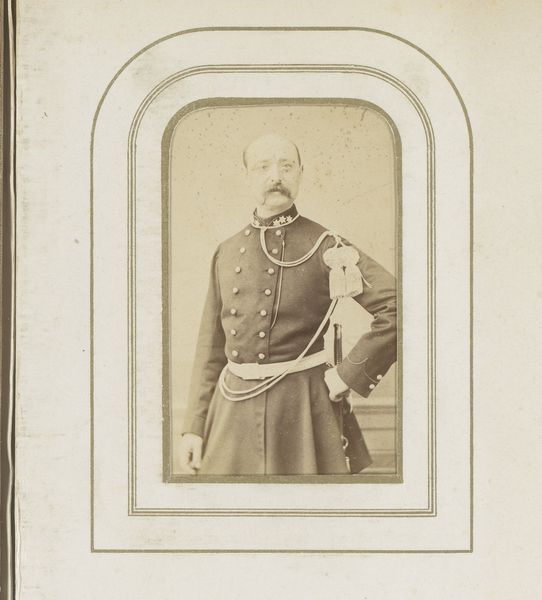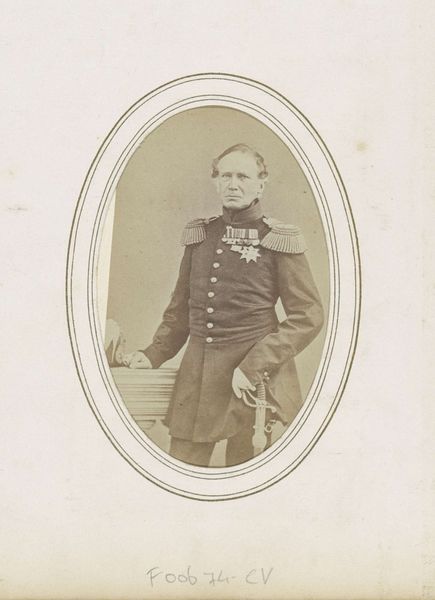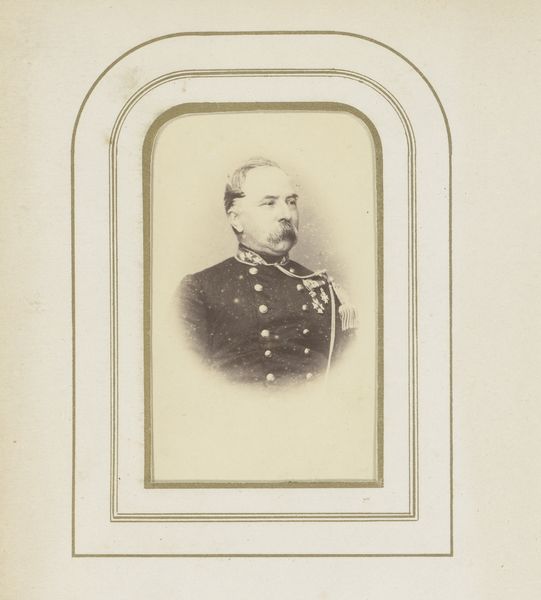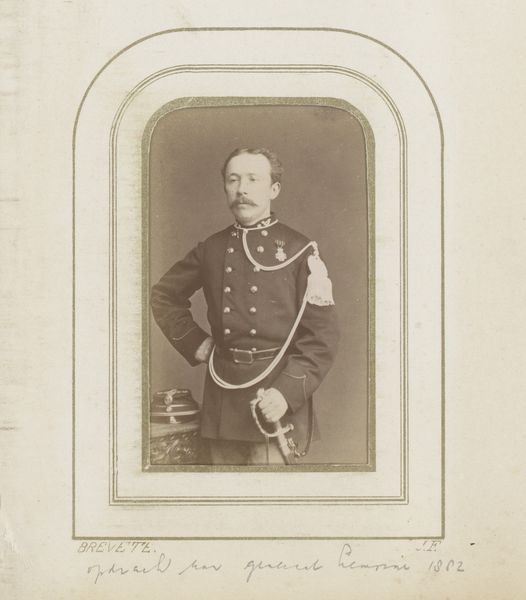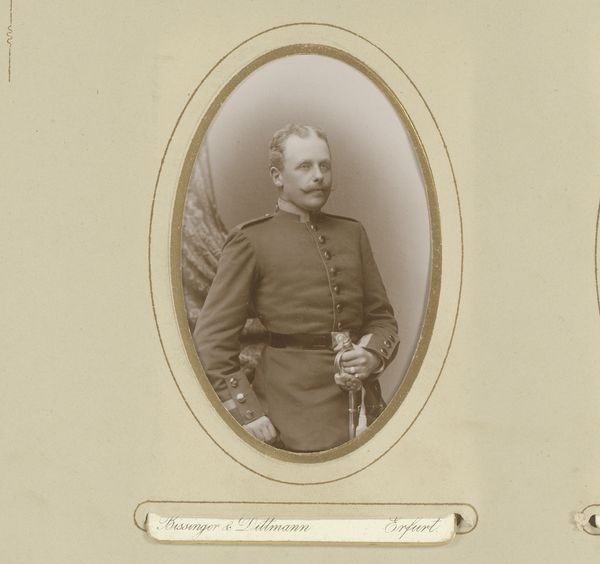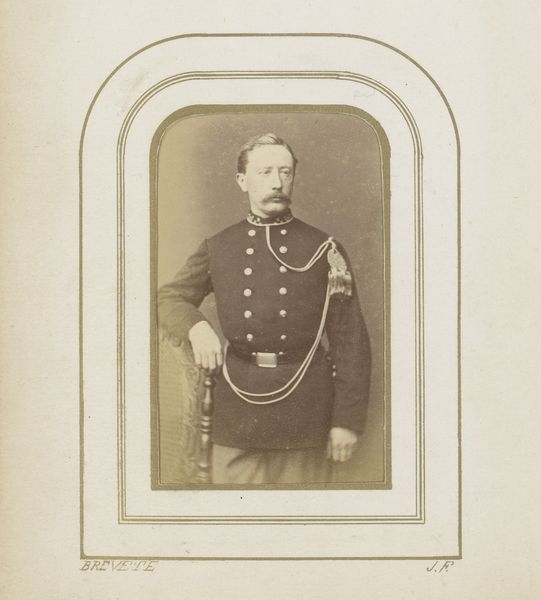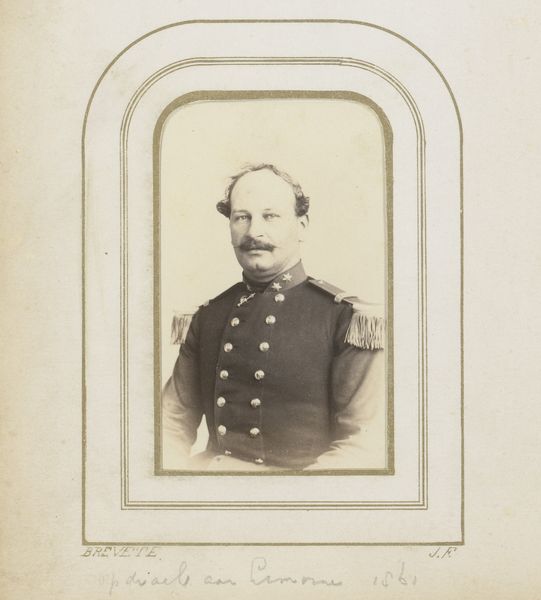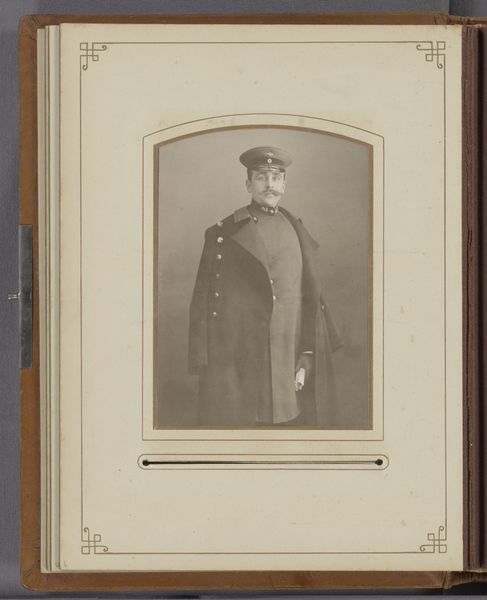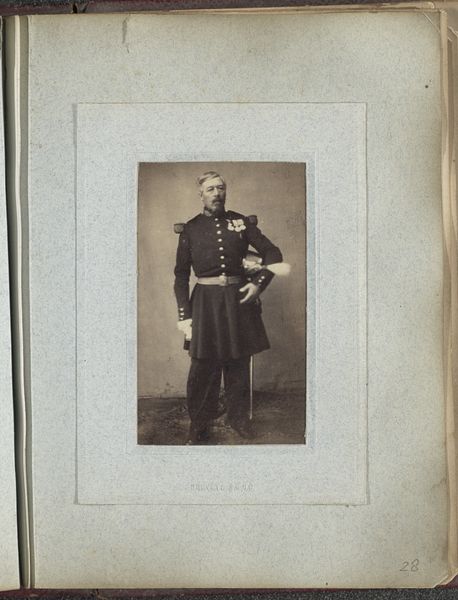
photography
#
portrait
#
photography
#
genre-painting
#
academic-art
#
realism
Dimensions: height 83 mm, width 50 mm
Copyright: Rijks Museum: Open Domain
Curator: This photographic portrait, taken in 1862 by Ghémar Frères, is currently housed at the Rijksmuseum. It's entitled "Portret van een man in uniform," or "Portrait of a man in uniform." What are your initial thoughts? Editor: Well, first, there’s an undeniable weight to the image. It feels formal, serious, even… slightly melancholic. The subject, stiff in his military attire, exudes an air of stern authority, softened somewhat by what looks like careful studio lighting, typical of early portrait photography, really bringing out the details of the braid. It is striking to see how well preserved the photograph is after all this time. Curator: The context is vital, wouldn't you agree? The rigid formality and posed nature reflect the burgeoning rise of the commercial photography studio, which was quite reliant on the material culture of portraiture: props like that drapery there on the left, the ornate chair and of course the frame within the photograph, they speak of constructing both the image and the sitter's social persona for consumption. Editor: Absolutely. Think about the labor involved. Producing even one of these portraits at this time must have been intense, what with the darkroom alchemy, glass plate negatives, and not to mention the staging. Each tiny detail in this scene feels carefully chosen. His buttons, the way his saber sits against his hip... everything speaks. Do you suppose that backdrop curtain held more sway in the photo’s narrative back then, beyond sheer ornamentation? Curator: I suspect so. This isn't simply capturing a likeness, is it? This photo had a life. From the sourcing and production of the chemicals and equipment to its consumption, its trade in society as the mass media landscape emerged. This would have functioned as a material and ideological statement of rank, aspiration, and remembrance that was intimately entwined with photography's rising cultural capital at the time. Editor: Right. It’s about asserting power and place, capturing a moment to freeze time when the world changed faster than we can possibly imagine. It becomes more poignant given its age—now a window, isn’t it? To wonder about this officer in a bygone war or duty… fascinating, indeed. Curator: Indeed. It encourages contemplation regarding not only individual but photography’s trajectory too. Thank you for lending your artistic insights to this reflection.
Comments
No comments
Be the first to comment and join the conversation on the ultimate creative platform.
